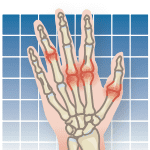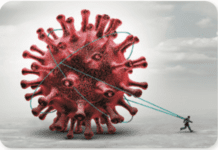Transcranial electrostimulation (TES)-a simple, noninvasive technique providing low-level electrical stimulation of the brain-produces significant pain-reducing effects, according to pain researchers at Stanford University. In a study reported in Anesthesia & Analgesia, ultraviolet light was used to create a small, painful area of sunburn on the upper thigh of healthy volunteers-a standard technique used to test the pain-relieving effects of drugs-to evaluate the effects of TES on pain response. In TES, a mild electrical current is delivered through electrodes placed around the patients head. Two stimulation frequencies were tested: 60 and 100 hertz. The subjects felt only a mild tingling sensation during the stimulation. The pain-relieving effects were then evaluated by sensory testing, with mechanical force applied to the sunburned skin and to undamaged skin. The results showed that the 60 Hz TES significantly reduced pain in both the burned and non-burned skin, while 100 Hz had little or no pain-relieving effect.
To continue reading this article or issue you must be a paid subscriber.
Sign in






























